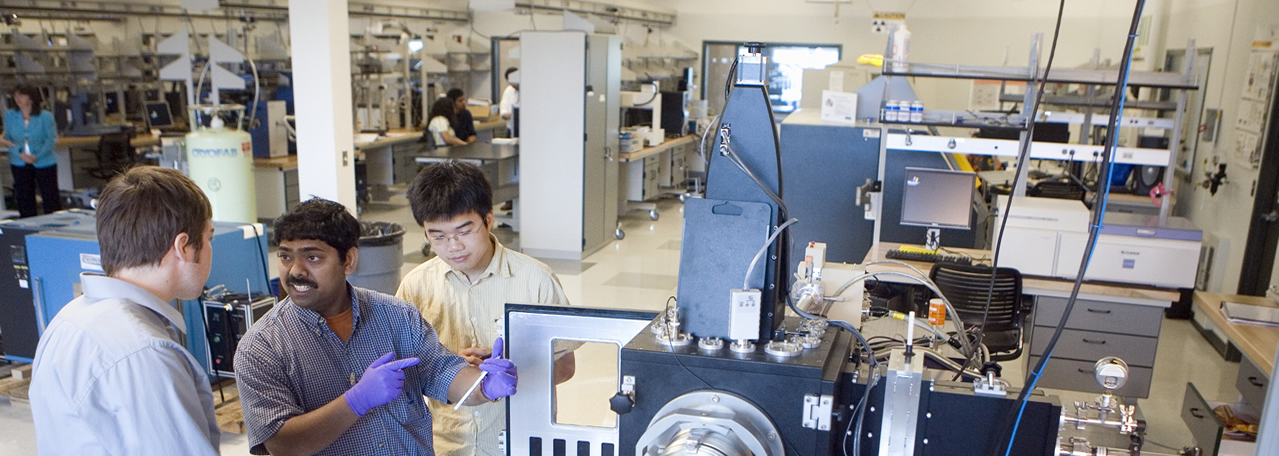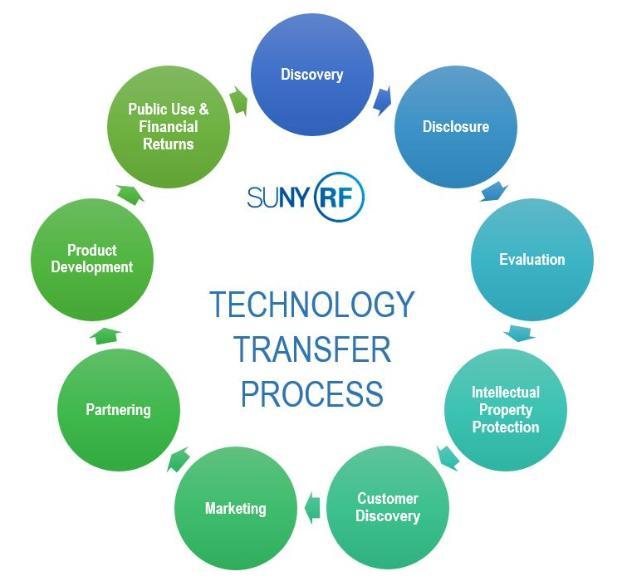The RFSUNY Technology Transfer Lifecycle
Descriptions of the Lifecycle phases:
PHASE 1: Discovery
The initial stage, in which inventors research and develop an idea into an innovation. This stage is when inventors conduct research and develop their innovation.
PHASE 2: Disclosure
At this stage, the inventor has finished developing their innovation and is now drafting their disclosure. This covers both the initial drafting period and any resubmissions of revised disclosures which inventors may need to make after the technology transfer team determines during preapproval review that further information is required before the disclosure can be accepted by the technology transfer office.
PHASE 3: Evaluation
The first stage in the accepted disclosure process after the disclosure has been completed and signed. This is when the technology transfer team reviews the disclosure for patentability and marketability.
PHASE 4: Intellectual Property Protection
If the technology transfer team determines that the disclosed innovation is patentable, a patent application will be drafted and filed with the U.S. Patent and Trademark Office. Patent counsel will be in contact with inventors while drafting the application and throughout prosecution as they seek out further clarification to help them draft a robust application and counter patent examiner objections.
If the technology transfer team determines after evaluation that the innovation is not patentable but likely marketable, the innovation will skip Phase 4 of the TT Lifecycle and go directly to Phase 5.
PHASE 5: Customer Discovery
The stage during which the commercialization team begins a deep dive into market analysis and conducts customer discovery interviews to learn from industry about the problems the technology could be solving, refine the market analysis and determine appropriate licensing targets.
PHASE 6: Marketing
Once the commercialization team has determined the market and potential licensing targets, the innovation has reached the Marketing phase of the TT Lifecycle. A description of the innovation may be posted to SUNY TechConnect and/or IN-PART, and the team will reach out to promising leads from Phase 5. Customer discovery may continue to take place while the innovation is in this phase.
PHASE 7: Partnering
The innovation has reached the Partnering phase once an option or license negotiations begin. The innovation remains in in this phase throughout the option negotiation, the life of the option, and the negotiation of the license. If the option/license negotiations are non-exclusive, marketing may continue during this phase.
If the inventors choose to form a start-up based on licensing the innovation they disclosed, the commercialization team will work with them in Phase 7 to reach the stage at which they can license the innovation and move on to Phase 8.
PHASE 8: Product Development
Once the license is executed, the innovation has reached the Product Development phase, as the licensee should now be focused on developing the innovation so that it may be brought to market as delineated in their business plan. If the license is non-exclusive, marketing may continue during this phase.
PHASE 9: Public Use & Financial Returns
Once a license generates revenue to the Foundation and the campus at which the innovation was developed, it has reached the Financial Returns phase of the TT Lifecycle. Phase 9 also covers actual sale of products/services developed based on the licensed innovation (Public Use).
This is the final phase of the lifecycle of an innovation in a technology transfer office…which can lead to research and development of new innovations to be disclosed, continuing the TT Lifecycle.



